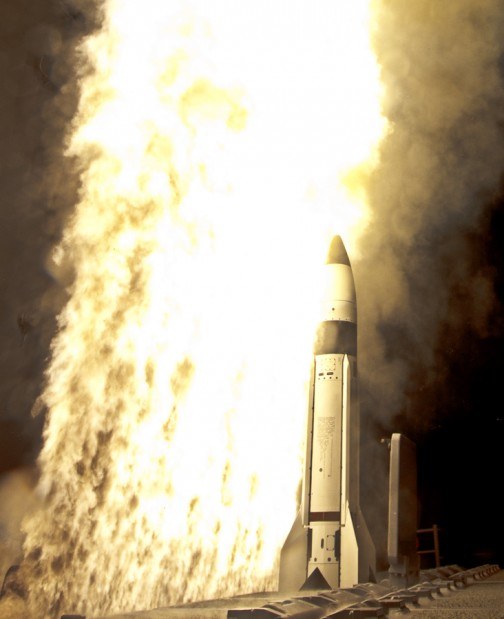MANA — The Missile Defense Agency and the U.S. Navy sailors aboard the USS Lake Erie successfully completed a flight test of the Aegis Ballistic Missile Defense system early Wednesday morning in the mid-Pacific Ocean. The Standard Missile-3, or SM-3
MANA — The Missile Defense Agency and the U.S. Navy sailors aboard the USS Lake Erie successfully completed a flight test of the Aegis Ballistic Missile Defense system early Wednesday morning in the mid-Pacific Ocean.
The Standard Missile-3, or SM-3 Block IB interceptor missile, successfully intercepted a separating ballistic missile target, which was launched from the Pacific Missile Range Facility in Mana at 11:15 p.m. Wednesday, states an MDA release.
Riki Ellison, a missile expert and chairman and founder of the Missile Defense Advocacy Alliance, said the target was a missile with substantial range using a second separating stage representing a much more sophisticated and realistic ballistic target reflecting the modernized Iranian and North Korean ballistic missiles currently in their inventories.
Following the target launch, which flew on a northwesterly trajectory toward a broad ocean area, the crew aboard the USS Lake Erie detected and tracked the missile with its onboard AN/SPY-1 radar.
Utilizing this technology, the USS Lake Erie, equipped with the second-generation Aegis BMD 4.0.1 weapon system, developed a fire control solution and launched the SM-3 Block IB missile.
Continuing to track the target, the USS Lake Erie continued to send trajectory information to the SM-3 Block IB missile while it was in flight.
The missile maneuvered to a point in space, as designated by the fire control solution, and released its kinetic warhead, which acquired the target diverted into its path and using only the force of a direct impact, engaged and destroyed the threat in a hit-to-kill intercept.
Wednesday’s test event was the second consecutive successful intercept of the SM-3 Block IB missile and the second-generation Aegis BMD 4.0.1.
The intercept is a critical accomplishment for the second phase of the President Barack Obama’s European Phased Adaptive Approach consisting of the SM-3 Block IB interceptor employed in the Aegis Ashore system in Romania starting in 2015.
“This successful intercept enabled the full capability of the new sea- and land-based interceptor, the SM-3 Block IB and provided needed confidence for the U.S. Navy to deploy it and the U.S. Congress to acquire it,” Ellison said in an email.
All components in the test performed as designated resulting in a very accurate intercept, according to initial indications.
Ellison said the successful SM-3 Block IB is significant for several reasons including the immediate protection and capability for the U.S. Navy’s 7th and 5th Fleets from Iran and North Korea’s medium-range and more sophisticated missiles as well as being the second of three successful intercept tests required for the SM-3 Block IB certification by U.S. Congress to make a decision to acquire these missiles.
“This new missile and its Aegis BMD platforms are absolutely vital for security and peace in the world, today and tomorrow,” he said.
The first successful SM-3 Block IB intercept took place on May 9.
This was the 23rd successful intercept in 28 flight test firings for the Aegis Ballistic Missile Defense program. Across all of the BMD programs, it is the 54th successful hit-to-kill intercept in 68 flight tests since 2001.
Aegis BMD is the sea-based midcourse component of the MDA’s BMD System and is designed to intercept and destroy short- to intermediate-range ballistic missile threats.
The MDA and the U.S. Navy cooperatively manage the Aegis BMD program.
• Dennis Fujimoto, photographer and staff writer, can be reached at 245-3681 (ext. 253) or dfujimoto@ thegardenisland.com.


